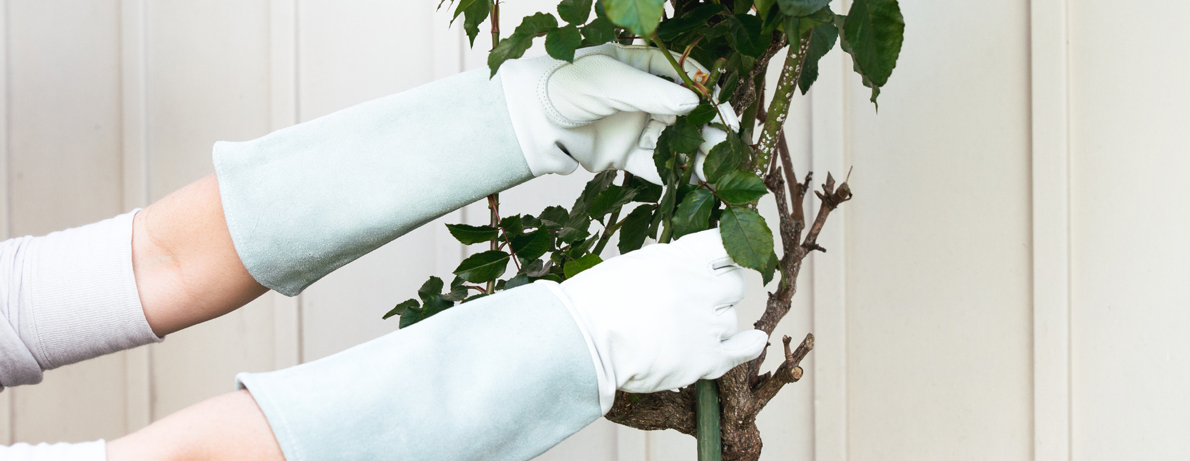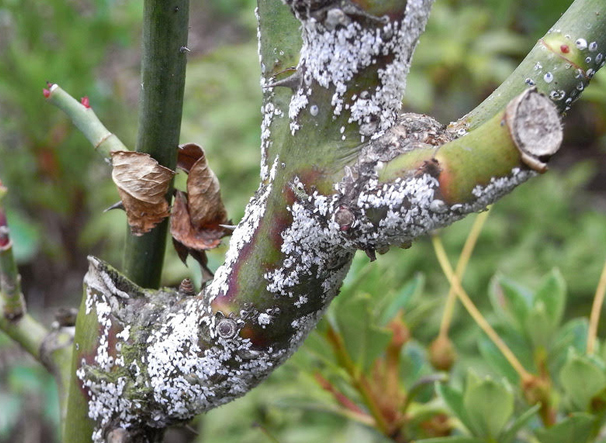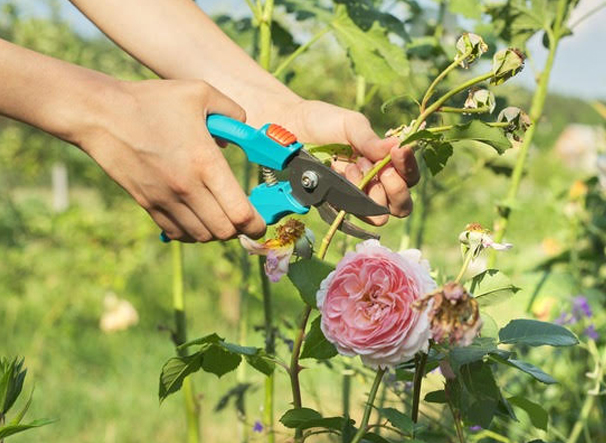Posted by Kelly Jean Reyland
4th Jul 2023
A guide to rose pruning and care

They are a favourite flower of many and for good reason. With some care and strategic pruning, a rose bush will reward you with bloom after bloom year after year.
Winter cleanup
There are a number of pests and diseases that can affect roses and the old saying ‘a pinch of prevention is worth a pound of cure’ is as true now as it was then. Garden hygiene plays an important role in prevention. Picking up the affected leaves once they have dropped or even better, picking them off the plant at the first sign can prevent reinfection the next growing season or stop an infection or infestation spreading.For deciduous trees and shrubs – like roses – winter dormancy when the leaves are dropped, gives us an opportunity to get rid of any overwintering pests or disease spores that may be lingering. Scale, fungal spores and insect eggs are the main culprits we are targeting with winter sprays.

Lime Sulphur is useful if your roses are refusing to drop their leaves and go dormant. Be warned it is messy and smelly and you have to take care to avoid getting it on any surrounding evergreen plants as it works by burning. It’s very important to apply it 2-3 weeks before or after any other sprays as it can react with other spray residue and cause damage.
The standard winter sprays are a mineral spraying oil and a copper fungicide. The oil smothers any scale and insect eggs still present and the copper kills any fungal spores and acts as a protectant, especially following pruning. In the past, it was recommended to mix and apply the two sprays together but current best practice is to spray them separately, 1 week apart.
Reapply once a month from June – August.
Pruning
It’s best to give your roses a prune after they are completely dormant, so we recommend to carry it out in July – mid August
Before you start pruning – run through your checklist:
Is it a sunny dry day (a day that you would hang out your washing is a good indicator!) -It’s really important to avoid damp, overcast days because the cuts won’t seal and disease is more likely to enter through the wounds.
Are your secateurs clean and sharp? Starting with sharp secateurs and resharpening as you go will make the job much easier on you and clean cuts will heal faster.
Do you have some gloves and arm protection? Rose thorns can cause damage and infection so please cover up.
When it’s time to prune – it can be hard to know where to start!

For bush roses and standard roses:
Start with the 3 D’s -dead, damaged or diseased branches.
Once you have removed all of those, look at the overall structure.
- You are aiming for an open vase shape where plenty of light can get into the middle.
- Aim to remove any weak or spindly branches and any branches that cross over other branches.
- Aim to reduce the overall height of the bush by one third.
- Cut your remaining branches back to a viable bud that is outward facing.
When you cut, make them at a 45 degree angle just above the bud. Ideally the bottom of the angled cut should be level with the top of the bud and angled away from the bud.
If you are cutting any branches thicker than a pencil, we recommend that you apply a pruning paste to seal the cut.
For climbing roses:
Remove the 3-D's, the weak and spindly and the crossing branches. The aim is always to get the branches to run as horizontal as possible as the rose will produce flowers right along the length of the stem, rather than just at the tip.
After pruning apply a copper spray to help seal and protect the cuts.
When the rose starts to come into leaf, apply a rose spray to protect the soft young foliage from aphids and Black spot. This can be applied as a preventative regularly through the growing season or as a treatment at the first sign of pest or disease.

Good health
A healthy rose is less likely to be infected by fungal diseases and insects. These will often arrive when a plant is stressed. Environmental stresses include too much or too little water and food so choose a slow release food that is appropriate for a flowering plant (these will have a higher K or potassium level than a general fert) that will provide a small dose of food regularly and ensure you follow instructions for when to reapply.
If you have an irrigation system, it is better to water deeply two or three times a week than a small amount every day. Choose an irrigation system that directs the water onto the surrounding soil rather than over the foliage. Spread mulch around the rose to help prevent moisture loss.
Utilise products like liquid seaweed or kelp pellets to help improve the health of the rose plant and the soil it grows in. These should be used in conjunction with food, not as a replacement for it.
When a rose is in bloom, remove the spent blooms regularly to encourage more flowers to form.
Keep your rose happy and healthy and it can live for many years, providing blooms for you to enjoy.
Written for Gubba by Kelly Jean Reyland of Garden Advice NZ


























